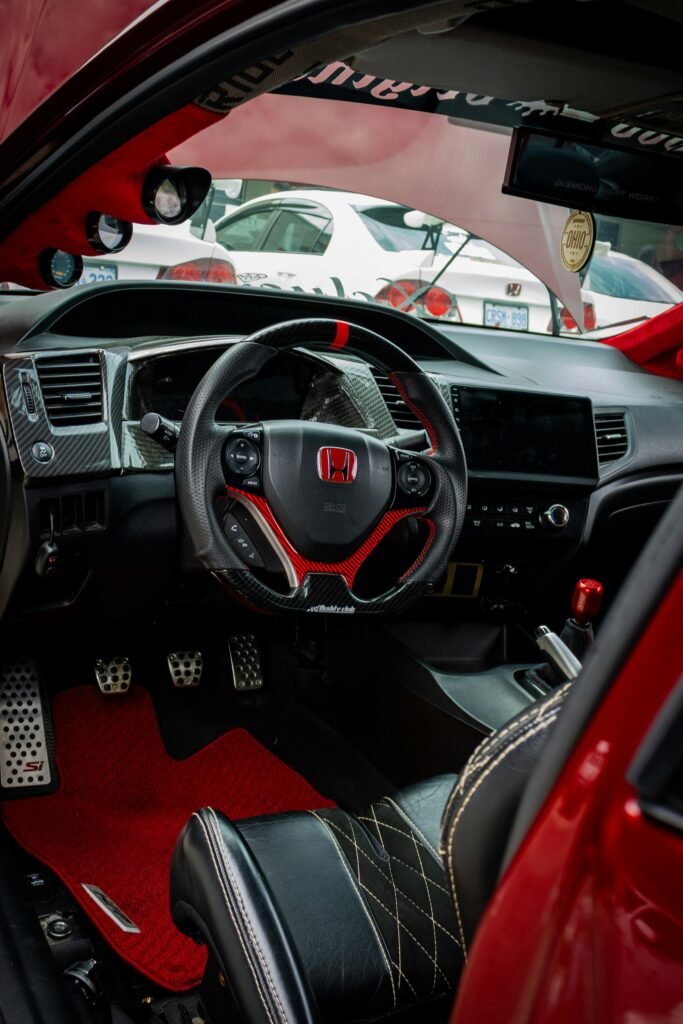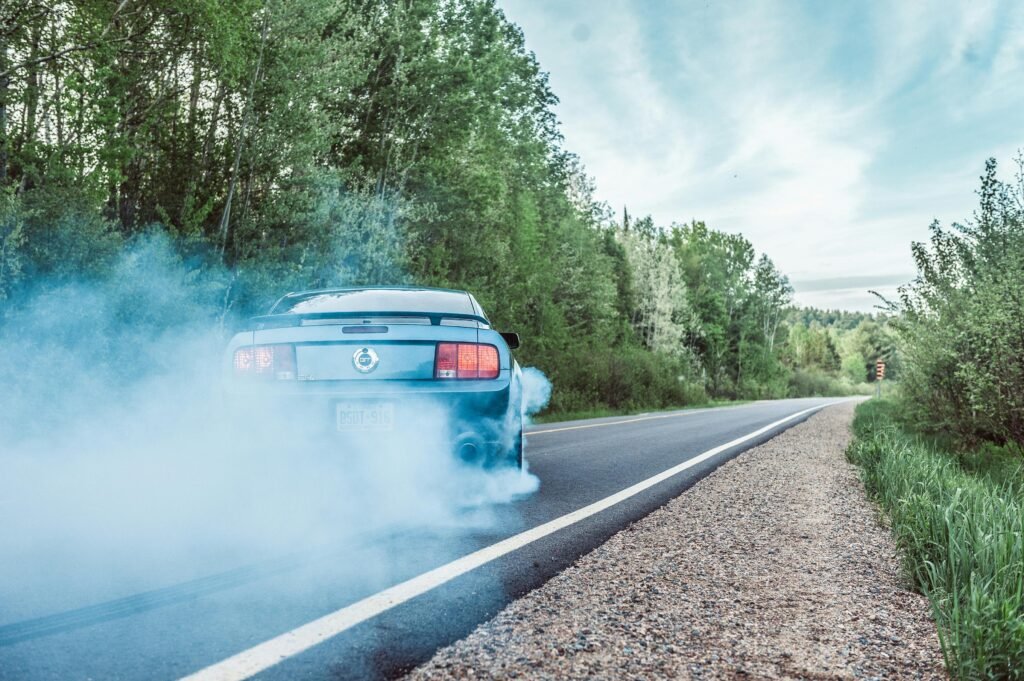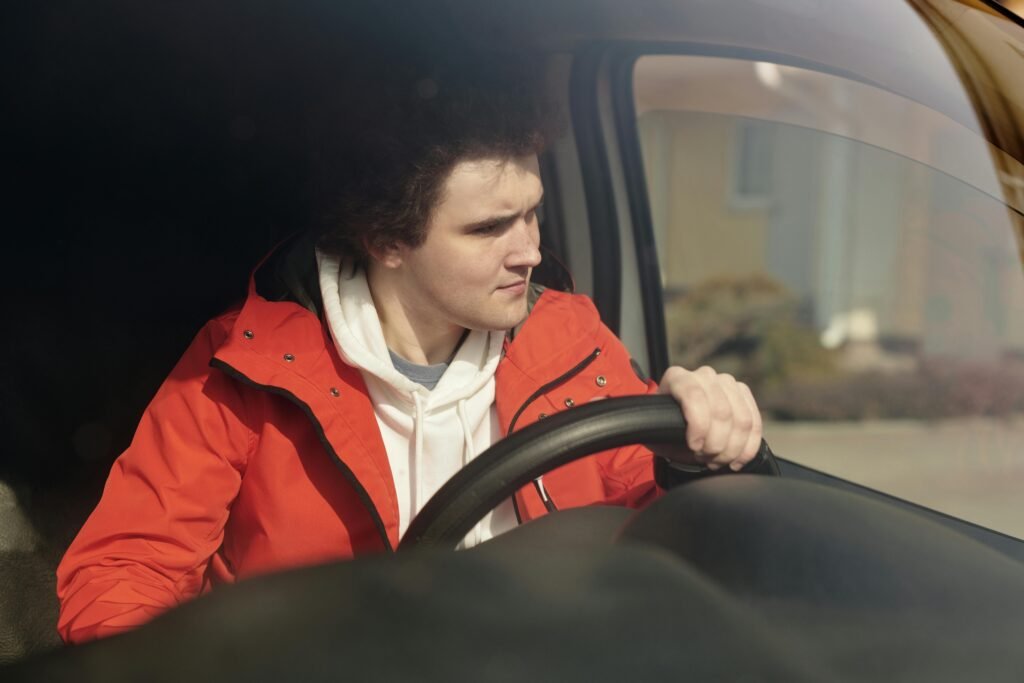Throttle Blipping Explained: What Every Manual Driver Should Know
When I drive a manual car, to get going, I may blip the throttle before lifting the clutch. Often, I don’t even realize I’m doing it, but sometimes people notice and ask me why.
What is blipping the throttle? Well, the throttle pedal, also known as the accelerator pedal or gas pedal, is this pedal here. It controls how much power your engine develops and how high your revs are. To get a car moving quickly, you usually need to press the pedal enough to reach around 2000 RPM.

Yes, you can move many cars without pressing the pedal at all, but it’s going to be slow, and in some cars, you’re likely to stall or bog down (more on bogging down later). I want 2000 revs so I can move quickly.
So, I press the throttle pedal and get the revs to 2000, but that takes time—that’s hardly “now.” What can I do? I could press the pedal harder to make the revs rise more quickly. The revs certainly rise faster, but now I have so many revs that I’m probably going to burn my clutch out.
What I tend to do instead is blip the throttle hard to make the revs rise quickly and then hold the pedal gently to maintain them. I get the revs quickly up to 2000, and now I’m ready to go immediately without burning my clutch.
Putting It Into Practice
I’m in gear, the handbrake off, ready to go. When I go, I want to go immediately. I’ll blip the throttle, and I’ll be off. Getting the car rolling as soon as I wanted to, I hammered down on the gas, and then I started moving—not much delay.
So, the throttle blip start is more about starting earlier than accelerating quickly. You can use it to help you accelerate quickly, but it certainly allows you to get the car moving when you need to, on the spur of the moment.
This time, I’m going to do a fast start using the throttle blip. I’ll just use more gas, and I got the car up to 33 miles an hour in no time at all. I woke the engine up, got it rolling, and then gave lots of power to accelerate quickly.
Advantages
Throttle blip starts to help me move the car immediately. I can accelerate slowly, quickly, or anywhere in between, but I get going straight away without delay.
It also helps me accelerate a car quickly without burning the clutch. If I want to get going quickly, I’ll press the throttle pedal harder, but that increases the likelihood of too many revs, which can overheat the clutch.
With a throttle blip, it’s easier to get the revs up without making them too high. It also helps me with cars that have a difficult throttle pedal. Some throttle pedals don’t respond much to light presses, but then the revs fly up if you press a bit harder.
If I blip the throttle, I can get the revs up without making them too high, and then I can bring the clutch to the bite point and add more power with the throttle pedal. It’s easier to control the throttle when the clutch is engaged because it has to push against the car’s weight.
When the clutch is down, the engine can spin freely with nothing holding it back, making the throttle pedal quite sensitive.
Bogging Down
I’m now going to compare a smooth throttle blip start, where I accelerate smoothly and get pushed back in my seat until the gear changes, with bogging down.
Bogging down is when you don’t press the throttle pedal enough. You start accelerating but then lurch forward before accelerating again. When it goes back, I’m accelerating. When it jolts forward, I’ve either bogged down or changed gear.
When I do a good start, the car will stay pushed back until the gear changes and won’t lurch forward.
Here’s how it works: with a throttle blip start, the car stays pushed back until I change gear, then it flies forward slightly as I shift. If I bog down, the car jolts forward, then backward, and it feels jerky.
I’ll demonstrate the throttle blip start one more time. It’s much smoother from the beginning, and it doesn’t jolt forward until the gear changes.
Smoother Shifting
It’s hard to prevent a forward jolt entirely during a gear change because you have to cut power. However, you can smooth it out by gradually reducing power before shifting.
When done properly, the car doesn’t fly forward; it moves gently instead. There will still be movement, especially if the road is bumpy, but it’ll be much less harsh than cutting power abruptly.
Comparing Throttle Blip and Normal Starts
Now, let’s compare a throttle blip start to a normal start. A normal start is what I’d use if I wasn’t trying to move immediately or what I’d teach a learner driver. Throttle blip starts are harder and better for experienced drivers.
With a normal start, I press the throttle, hear the revs rise, and then lift the clutch. This avoids stalling or bogging down but has a slight delay.
With a throttle blip start, the car moves straight away. The difference in numbers might not seem huge, but from the driver’s perspective, it feels much more responsive. You don’t have to wait for the engine to rev up—you’re off as soon as you want to be.
Hills
Throttle blipping also helps with hill starts. Let’s say I’m in gear, my foot’s on the brake, the handbrake is off, and the car doesn’t have hill-hold assist.
With a quick blip of the throttle, I can get the revs up, then switch to the gas pedal and lift the clutch to move off without rolling back.
This method is tricky, so if you’re new to driving, stick to the handbrake start. But with practice, throttle blipping becomes the fastest, easiest way to get moving on a hill.
Final Thoughts
Throttle blipping isn’t just a technique—it’s a way to stay in control. It helps me start smoothly, accelerate confidently, and protect my clutch. While it takes practice to master, it’s a skill worth learning for any manual driver looking to level up their abilities.


